Could Match sadoun SP240 Polar mount to my stationary Dish 8' WS International?
- Thread starter Vallenato
- Start date
- Latest activity Latest activity:
- Replies 34
- Views 8K
You are using an out of date browser. It may not display this or other websites correctly.
You should upgrade or use an alternative browser.
You should upgrade or use an alternative browser.
- Status
- Please reply by conversation.
I tried an electrically tuned feed horn on c band and 6' dish and did not work went back to polorotor as it will fine tune skew.
Incorrect information is being provided.
A mechanical polarizer is not necessary on a prime focus dish. A prime focus dish on polar mount tracks the arc and rotates the feed in the same way that an offset dish on an HH motor rotates the feed.
If either dish is rotated to the East, a negative rotation is automatically made to a feed and if rotated West a positive rotation is made. This is because both reflectors are rotated on a polar axis.
While it is nice to be able to optimize the skew for peak performance, it is usually unnecessary. A LNBF will typically provide adequate performance for most signals.
Fixed AZ/EL type dishes (without polar axis rotation) require the feed skew rotation to be manually set.
A mechanical polarizer is not necessary on a prime focus dish. A prime focus dish on polar mount tracks the arc and rotates the feed in the same way that an offset dish on an HH motor rotates the feed.
If either dish is rotated to the East, a negative rotation is automatically made to a feed and if rotated West a positive rotation is made. This is because both reflectors are rotated on a polar axis.
While it is nice to be able to optimize the skew for peak performance, it is usually unnecessary. A LNBF will typically provide adequate performance for most signals.
Fixed AZ/EL type dishes (without polar axis rotation) require the feed skew rotation to be manually set.
Incorrect information is being provided.
A mechanical polarizer is not necessary on a prime focus dish. A prime focus dish on polar mount tracks the arc and rotates the feed in the same way that an offset dish on an HH motor rotates the feed.
If either dish is rotated to the East, a negative rotation is automatically made to a feed and if rotated West a positive rotation is made. This is because both reflectors are rotated on a polar axis.
While it is nice to be able to optimize the skew for peak performance, it is usually unnecessary. A LNBF will typically provide adequate performance for most signals.
Fixed AZ/EL type dishes (without polar axis rotation) require the feed skew rotation to be manually set.
True, generally not. I don't use a polarotor, but they do make them for sale. Some guys like them when they have a satellite that has drifted off skew or is sending signal off skew for other reasons.
As far as peaking the dish with rotor control, I can see how that could make the difference between receiving a watchable broadcast or not.
As I said, I haven't needed a polarotor, but there is a market for them.
Right now I have done the attachment the Big Ring of the Wsi international with the sadoun ring Mount . I have spent a lot time to do the Holes and strap the "L" metal because i did slow calculations to assure the centered each other.
I have mounted the sadoun mount on the Dish and then put everything on the sadoun 39" pole mast pipe.
I have to admit that this stuff is very "Heavy" I recommend to put with 3 persons or more. So the next step is to put the LNB arms and start the testing
Pictures speaks
Comments are welcome!!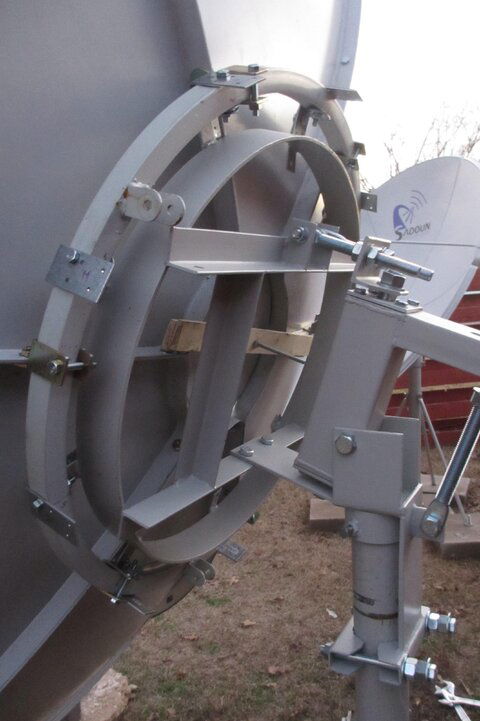

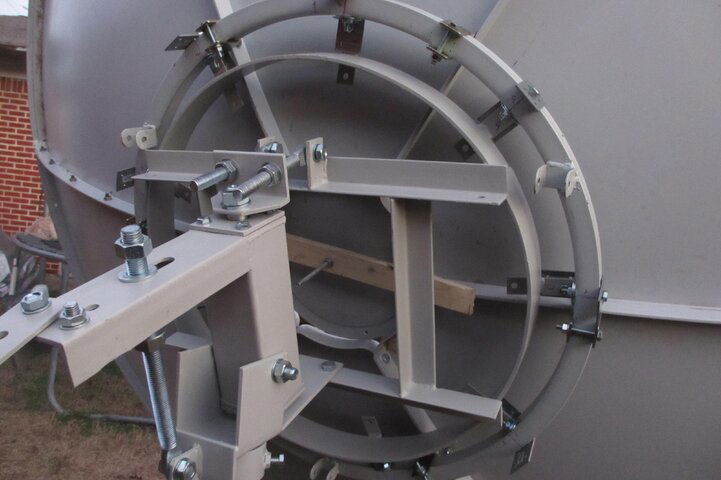

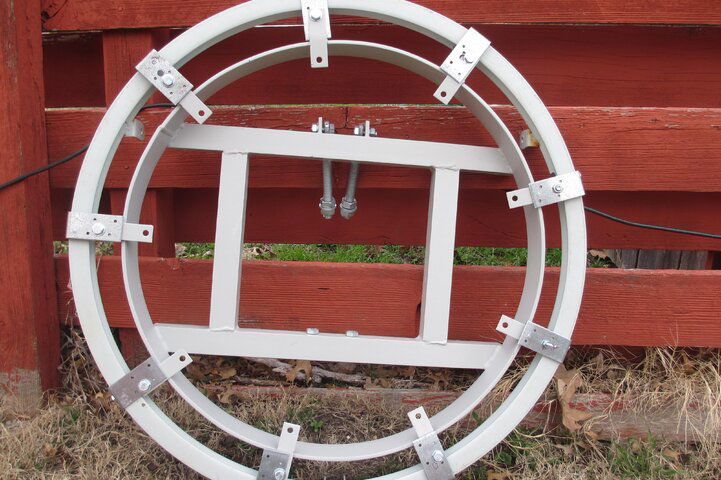
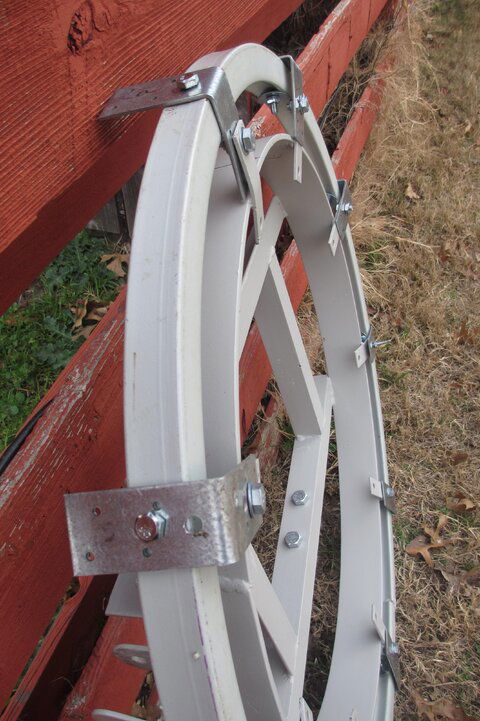
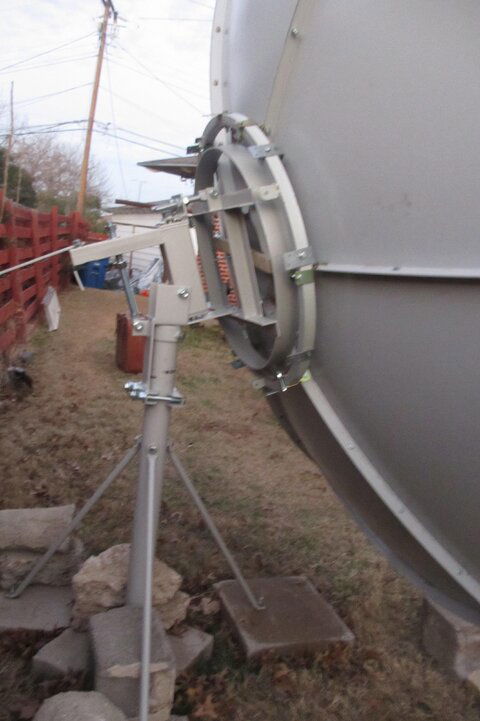
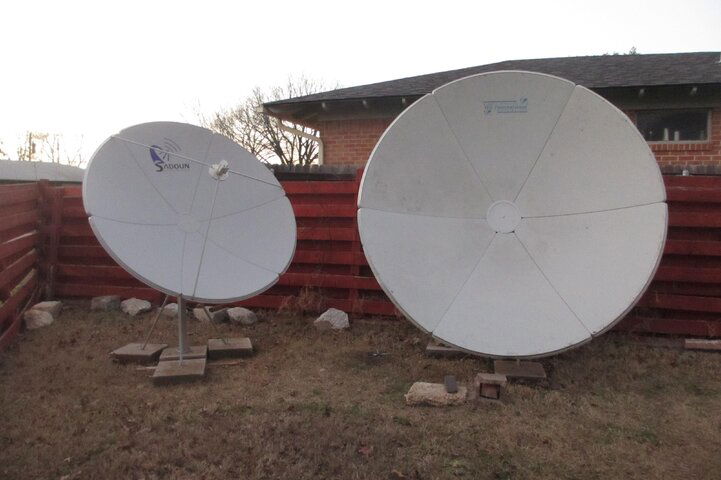
I have mounted the sadoun mount on the Dish and then put everything on the sadoun 39" pole mast pipe.
I have to admit that this stuff is very "Heavy" I recommend to put with 3 persons or more. So the next step is to put the LNB arms and start the testing
Pictures speaks
Comments are welcome!!








Nice clean modification there, Kudos.
If you're worried about the weight, adding stress on the actuator, might consider a counter weight system.
http://www.satelliteguys.us/threads...h-on-AJAK-180-H-H-Mount?p=3041671#post3041671
If you're worried about the weight, adding stress on the actuator, might consider a counter weight system.
http://www.satelliteguys.us/threads...h-on-AJAK-180-H-H-Mount?p=3041671#post3041671
Hello Everybody
This weekend I have started to test the WSI international antenna with the Sadoun polar mountSP240pm..
Appears that the Sadoun Polar Mount ONLY works with actuator and does not work as stationary.
I don't have yet an actuator so I started to test stationary-manually on one specific satellite. My objective was to aim at intelsat 21 at 58 W C band.. so I set the Azimuth and elevation according to my position. After set the Azimuth I have noted that the Sadoun polar mount SP240 pm with the WSI antenna is moving through the arc east to west and if you put in one position and if you are trying to keep in hold through to tight the big Nuts (on the azimuth set) is moving anyway (picture 1a and 1b)on 6 ft you can keep in hold the azimuth set after to tight the Nuts (picture 2)
So to keep in hold the Azimuth set I have installed 2 DTV support arms is was not easy because the wind was strong (picture 3a and 3b).. So after keep in hold the azimuth and elevation adjustments and LNB adjustments the signal came strong. I have noted the improvement signal reception on 58 w signal compared to my sadoun 6 ft so these numbers are tell me that this mofification is going on good way..
Question ? Anybody knows whats going on about the Azimuth set? Why after tight the Nuts the dish is Moving (east-west), I never heard about that any big dish works only with Motor or actuator..or Maybe something I need to know about the Sadoun Polar mount SP240pm.
Another observation on this was that while the elevation set is low the azimuth antenna is not moving, only moves when I started to set up the elevation like 30 degrees and up.(picture 4a and 4b elevation set)
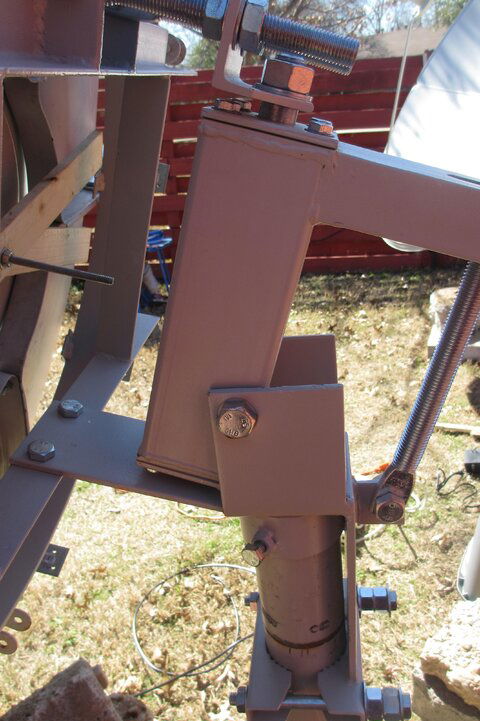
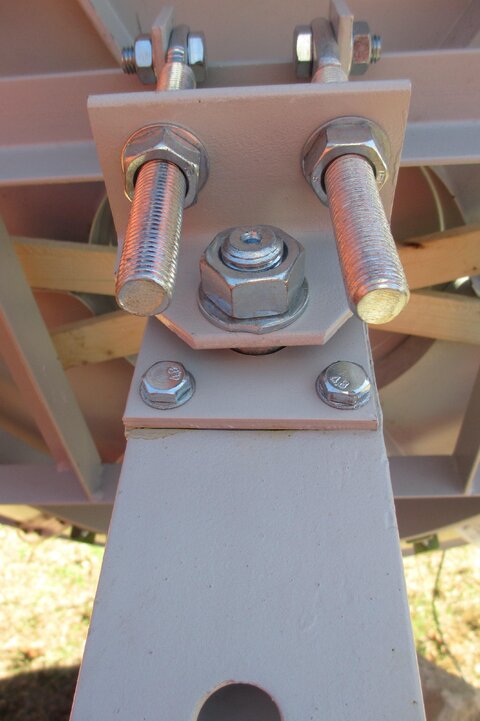
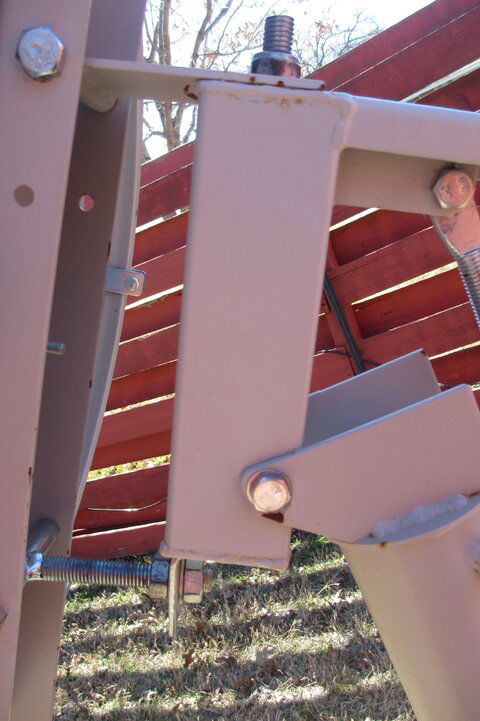


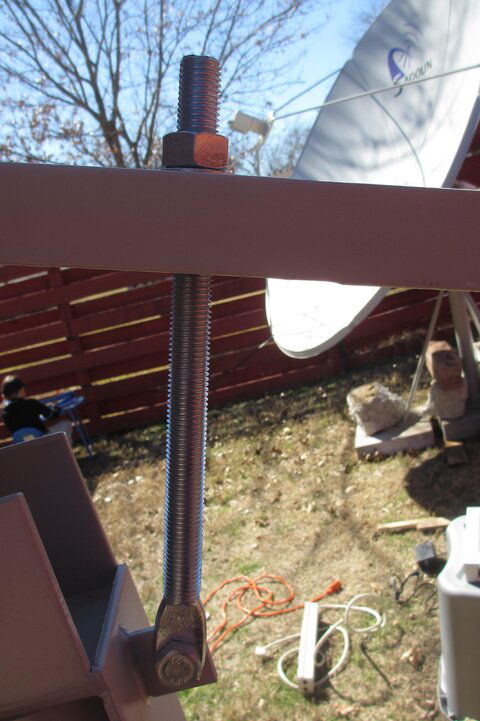
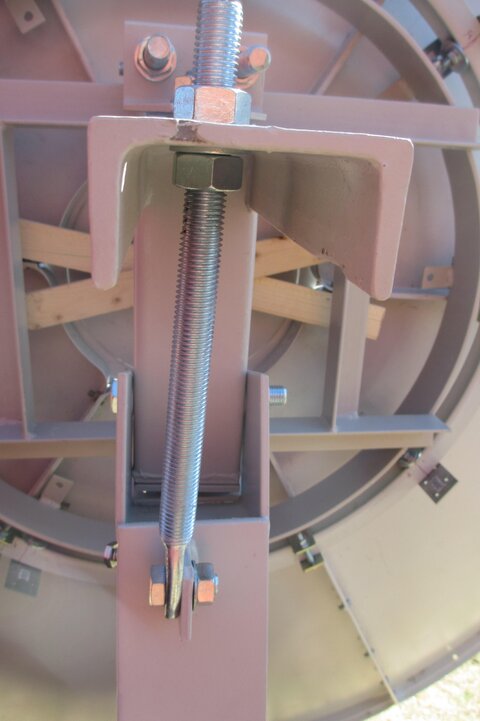
This weekend I have started to test the WSI international antenna with the Sadoun polar mountSP240pm..
Appears that the Sadoun Polar Mount ONLY works with actuator and does not work as stationary.
I don't have yet an actuator so I started to test stationary-manually on one specific satellite. My objective was to aim at intelsat 21 at 58 W C band.. so I set the Azimuth and elevation according to my position. After set the Azimuth I have noted that the Sadoun polar mount SP240 pm with the WSI antenna is moving through the arc east to west and if you put in one position and if you are trying to keep in hold through to tight the big Nuts (on the azimuth set) is moving anyway (picture 1a and 1b)on 6 ft you can keep in hold the azimuth set after to tight the Nuts (picture 2)
So to keep in hold the Azimuth set I have installed 2 DTV support arms is was not easy because the wind was strong (picture 3a and 3b).. So after keep in hold the azimuth and elevation adjustments and LNB adjustments the signal came strong. I have noted the improvement signal reception on 58 w signal compared to my sadoun 6 ft so these numbers are tell me that this mofification is going on good way..
Question ? Anybody knows whats going on about the Azimuth set? Why after tight the Nuts the dish is Moving (east-west), I never heard about that any big dish works only with Motor or actuator..or Maybe something I need to know about the Sadoun Polar mount SP240pm.
Another observation on this was that while the elevation set is low the azimuth antenna is not moving, only moves when I started to set up the elevation like 30 degrees and up.(picture 4a and 4b elevation set)







It's a polar mount, it's made to move back and forth. You will NEVER be able to crank the nuts down tight enough to stop it from moving by itself. It NEEDS to either have an actuator, OR you can use a long piece of angle-iron with holes drilled in it to "lock" it into a certain satellite. Mount the piece of angle iron in place of an actuator. I have done that in the past, and it works fine provided everything else is set properly for the polar mount, as if you are using an actuator.
Just make sure the holes drilled correspond with the length needed to point at the particular satellite you want.
Just make sure the holes drilled correspond with the length needed to point at the particular satellite you want.
Maybe I'm misunderstanding you but,the entire purpose of a polar mount is so that the dish will move and track the arc with an actuator,be it manual or motorized.
Azimuth,elevation and declination are set once on installation and then left alone.Once set properly for your location the dish will then move and track the arc with the actuator.
If all you want to do is lock the dish down on one sat you would use an azimuth/elevation mount.You then have to readjust everything if you want to point at a different sat.
Primestar beat me to it,I type slow.
Azimuth,elevation and declination are set once on installation and then left alone.Once set properly for your location the dish will then move and track the arc with the actuator.
If all you want to do is lock the dish down on one sat you would use an azimuth/elevation mount.You then have to readjust everything if you want to point at a different sat.
Primestar beat me to it,I type slow.
Last edited:
Thanks primestar31 you are confirmed what I experimented on my set upIt's a polar mount, it's made to move back and forth. You will NEVER be able to crank the nuts down tight enough to stop it from moving by itself. It NEEDS to either have an actuator, OR you can use a long piece of angle-iron with holes drilled in it to "lock" it into a certain satellite. Mount the piece of angle iron in place of an actuator. I have done that in the past, and it works fine provided everything else is set properly for the polar mount, as if you are using an actuator.
Just make sure the holes drilled correspond with the length needed to point at the particular satellite you want.
Thanks Waylew..Maybe I'm misunderstanding you but,the entire purpose of a polar mount is so that the dish will move and track the arc with an actuator,be it manual or motorized.
Azimuth,elevation and declination are set once on installation and then left alone.Once set properly for your location the dish will then move and track the arc with the actuator.
If all you want to do is lock the dish down on one sat you would use an azimuth/elevation mount.You then have to readjust everything if you want to point at a different sat.
Primestar beat me to it,I type slow.
Yes sounds Crazy!! Why this guy has done everything for just one satellite
My plan is to get an actuator in the future. I am just testing my project to see the signal reception
I seem to remember a while back, one of these dishes shipped with a metal strap.
You put it where the actuator goes, if you don't have the motor (yet).
So, that's how it is - and well explained above.
You put it where the actuator goes, if you don't have the motor (yet).
So, that's how it is - and well explained above.
SatelliteAV said:For a fixed dish I have used 3 tent stakes and a 2x4...
Iceberg would be proud!
- Status
- Please reply by conversation.
Similar threads
- Replies
- 9
- Views
- 1K
- Replies
- 1
- Views
- 535
- Replies
- 0
- Views
- 202
- Replies
- 2
- Views
- 419
- Replies
- 36
- Views
- 3K

